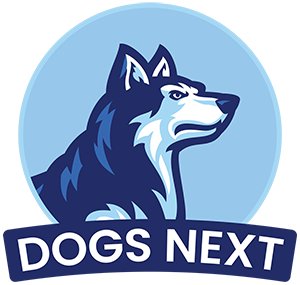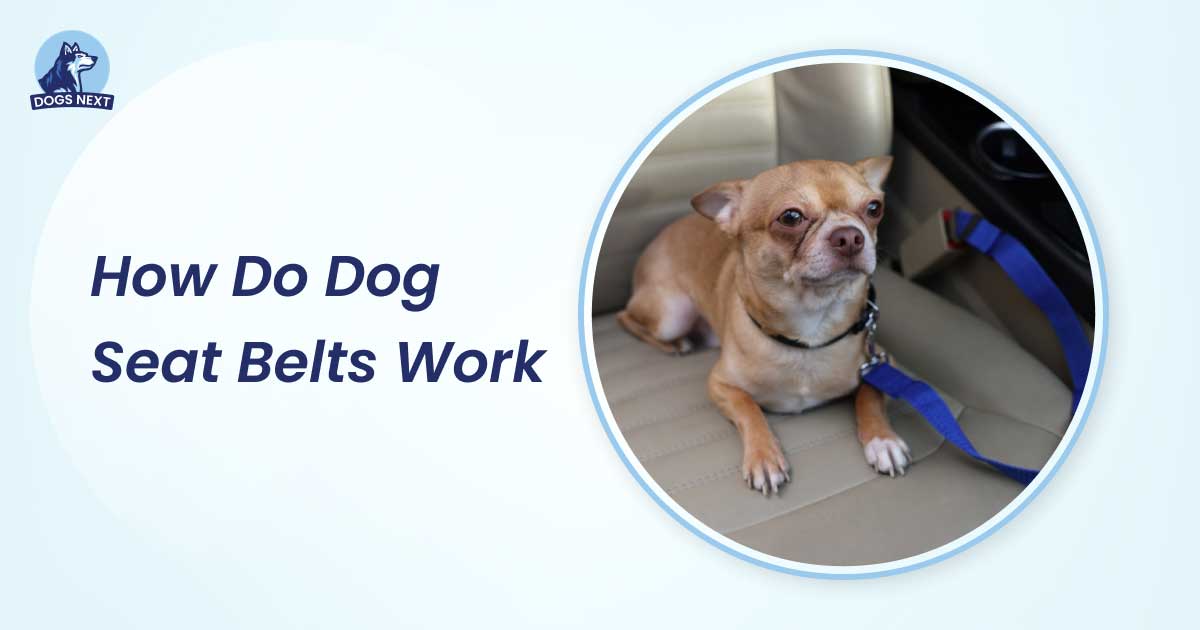Dog seat belts secure a dog in a vehicle, preventing movement during sudden stops or accidents. They attach to the car’s seat belt system.
Dog seat belts are essential for pet safety during car rides. These belts function by securing your dog in a specific position, reducing the risk of injury in case of sudden stops or accidents. Attaching directly to the car’s seat belt system, they prevent your pet from moving around, which can also minimize driver distraction.
Designed for comfort and effectiveness, many dog seat belts come with adjustable straps to fit various dog sizes. Investing in a reliable dog seat belt ensures that both you and your furry friend travel safely.
Overview Of Dog Seat Belts
Introduction paragraph about How Do Dog Seat Belts Work and Overview of Dog Seat Belts…
Dog seat belts are essential for keeping your furry friend safe during car rides. They help prevent injuries and keep your dog secure. Understanding how dog seat belts work can help you choose the right one for your pet.
How Dog Seat Belts Attach To Your Car
Dog seat belts typically attach to your car’s seat belt system. Some models clip directly into the seat belt buckle. Others loop around the seat belt strap. This ensures your dog stays in place during sudden stops or accidents.
Materials Used In Dog Seat Belts
High-quality dog seat belts are made from durable materials. Nylon and polyester are common choices. These materials are strong and withstand wear and tear. Many dog seat belts also feature padded sections for extra comfort.
Adjustable Features For A Snug Fit
Most dog seat belts are adjustable. This allows you to get a snug fit for your dog. An adjustable strap ensures the seat belt fits dogs of various sizes. You can also adjust it to suit different car models.
Types Of Dog Seat Belt Attachments
- Carabiner Clip: This type of attachment clips onto your dog’s harness.
- Seat Belt Buckle: This attachment clicks into the car’s seat belt buckle.
- Loop: This style loops around the car’s seat belt strap.
Safety Benefits Of Using Dog Seat Belts
| Benefit | Description |
| Prevents Distractions | Keeps your dog from moving around the car. |
| Reduces Injury Risk | Minimizes the chance of injury during accidents. |
| Ensures Compliance | Helps you follow pet travel safety laws. |
Choosing The Right Dog Seat Belt
- Check Compatibility: Ensure it fits your car model.
- Measure Your Dog: Get the right size for a secure fit.
- Read Reviews: Look for feedback from other pet owners.
Importance Of Securing Your Dog During Travel
Traveling with your dog can be fun, but safety should always be a priority. Many pet owners overlook the importance of securing your dog during travel. Dog seat belts are crucial for ensuring your pet’s safety and comfort during a trip. They work similarly to human seat belts, keeping your dog restrained and protected from sudden stops or accidents.
Why Secure Your Dog?
Securing your dog in the car prevents distractions while driving. An unrestrained dog can move around, causing you to lose focus. This increases the risk of accidents.
Protecting Your Pet
Dog seat belts keep your pet safe during sudden stops or collisions. They reduce the risk of injury by keeping your dog in place. This is especially important in high-speed accidents.
Legal Requirements
Some regions have laws requiring pet restraints in vehicles. Failing to secure your dog can result in fines. Always check local regulations before hitting the road.
Comfort And Peace Of Mind
Using a dog seat belt provides peace of mind for pet owners. Knowing your dog is safe allows you to focus on driving. This also makes the trip more enjoyable for both you and your furry friend.
| Type | Description |
| Harness-style | Attaches to a harness, distributing force evenly across the body. |
| Clip-in belts | Clips directly into the car’s seat belt buckle. |
| Zip-line harness | Allows some movement while keeping the dog restrained. |
Choosing The Right Seat Belt
- Ensure it fits your dog comfortably.
- Check for durability and material quality.
- Look for adjustable options for a better fit.
Installation Tips
- Read the manufacturer’s instructions carefully.
- Ensure the seat belt is properly secured to the car seat.
- Double-check the fit to ensure your dog is comfortable.
Types Of Dog Seat Belts
Dog seat belts are essential for keeping your furry friend safe during car rides. There are various types of dog seat belts available, each designed to suit different needs and preferences. Understanding the different types can help you choose the best option for your dog’s safety and comfort.
Seat Belt Harnesses
Seat belt harnesses are one of the most popular types of dog seat belts. They are designed to distribute the force of a sudden stop across the dog’s chest and back, preventing injury. A seat belt harness typically features:
- Adjustable straps to fit dogs of different sizes.
- Padded areas for extra comfort.
- D-ring attachments for leash connection.
These harnesses are easy to use. Simply place the harness on your dog and attach the seat belt through the harness loop. This keeps your dog secure without restricting movement too much. Many harnesses are also crash-tested to ensure safety.
Here’s a table highlighting some popular seat belt harness brands:
| Brand | Features | Price Range |
| Kurgo | Adjustable, padded, crash-tested | $25 – $50 |
| Sleepypod | High safety ratings, comfortable | $70 – $100 |
| Ruffwear | Durable, easy to use | $40 – $60 |
Tether Attachments
Tether attachments provide another method to secure your dog in the car. These tethers connect your dog’s existing harness to the car’s seat belt system. They are a versatile option and typically include:
- Adjustable length for different dog sizes.
- Carabiner clips for easy attachment to harnesses.
- Swivel designs to prevent tangling.
To use a tether, clip one end to your dog’s harness and the other to the car’s seat belt buckle or an anchor point. This setup allows your dog some freedom of movement while keeping them safely restrained. It is important to note that tethers should be used with a harness, not a collar, to prevent neck injuries.
Here’s a brief look at some reliable tether attachment brands:
| Brand | Features | Price Range |
| Blue-9 | Strong, adjustable, easy to use | $20 – $30 |
| EzyDog | Swivel design, durable | $15 – $25 |
| Mighty Paw | Carabiner clip, adjustable length | $10 – $20 |
Car Seat Carriers
Car seat carriers are ideal for small dogs. These carriers act like a mini-crate, providing a secure and enclosed space for your pet during travel. They often include:
- Padded interiors for comfort.
- Safety straps to attach to car seats.
- Mesh windows for ventilation.
To use a car seat carrier, place it on the car seat and secure it with the seat belt or provided straps. Then, place your dog inside and zip the carrier closed. Car seat carriers offer a cozy and protected environment, reducing anxiety and movement.
Here’s a comparison of some popular car seat carrier brands:
| Brand | Features | Price Range |
| Snoozer | Padded, safety straps, mesh windows | $60 – $100 |
| PetSafe | Comfortable, secure, easy to clean | $50 – $80 |
| Sleepypod | High safety ratings, stylish design | $100 – $150 |
How To Use A Dog Seat Belt (step-by-step)
Dog seat belts are essential for ensuring your pet’s safety during car rides. They work by restraining your dog and preventing them from moving around freely in the car. This reduces the risk of injury in case of sudden stops or accidents. Let’s delve into the step-by-step process of using a dog seat belt effectively.
Choosing The Right Type For Your Dog
Choosing the right dog seat belt is crucial for your pet’s safety and comfort. Not all seat belts are created equal, and selecting the right one depends on your dog’s size, breed, and behavior. Here are some key points to consider:
- Size and Weight: Ensure the seat belt is appropriate for your dog’s size and weight. A small dog will need a different type of restraint compared to a large breed.
- Material: Look for durable materials like nylon or polyester. These materials are strong enough to withstand the force of sudden stops.
- Adjustability: An adjustable seat belt allows you to customize the fit, ensuring your dog’s comfort and security.
- Compatibility: Check if the seat belt is compatible with your car’s seat belt system. Some models are designed to clip directly into the seat belt buckle, while others may need additional attachments.
Here is a table summarizing the features to consider:
| Feature | Details |
| Size and Weight | Match with your dog’s size and weight |
| Material | Durable materials like nylon or polyester |
| Adjustability | Allows customization for fit and comfort |
| Compatibility | Check with car’s seat belt system |
Proper Installation In The Car
Installing the dog seat belt properly in your car is crucial for effectiveness. Follow these steps to ensure a secure installation:
- Locate the Seat Belt Slot: Find the seat belt slot in your car where the dog seat belt will be attached. This is usually the same slot used for passenger seat belts.
- Attach the Seat Belt: Clip the dog seat belt into the seat belt slot. Ensure it clicks into place, indicating it’s secure.
- Adjust the Length: Adjust the length of the seat belt so your dog can sit, lie down, and move a bit. Ensure the belt is not too long to prevent your dog from roaming.
- Check for Twists: Ensure the seat belt is not twisted. A twisted belt can reduce its effectiveness and cause discomfort.
Here’s a quick checklist for installation:
- Locate the seat belt slot
- Clip the dog seat belt into the slot
- Adjust the length
- Check for twists
Securing Your Dog Safely
Once the seat belt is installed, it’s time to secure your dog safely. Follow these steps:
- Attach the Harness: Use a harness instead of a collar. A harness distributes the force of a sudden stop across the dog’s body.
- Clip the Seat Belt to the Harness: Attach the seat belt to the harness. Ensure the clip is secure and won’t come undone easily.
- Adjust for Comfort: Adjust the harness and seat belt to ensure your dog is comfortable. They should be able to sit and lie down without restriction.
- Double-Check Security: Before starting your journey, double-check the seat belt and harness. Ensure everything is secure and there are no loose parts.
Here is a summary table for securing your dog:
| Step | Details |
| Attach the Harness | Use a harness instead of a collar |
| Clip the Seat Belt | Attach to the harness securely |
| Adjust for Comfort | Ensure the dog can sit and lie down |
| Double-Check Security | Ensure no loose parts |
Benefits Of Using A Dog Seat Belt
Dog seat belts are designed to keep your furry friend secure during car rides. They function similarly to human seat belts, attaching to the car’s seat belt system or a separate harness. Using a dog seat belt offers numerous benefits for both you and your dog. These benefits include enhanced safety, reduced driver distraction, and compliance with traffic laws.
Protection For Your Dog
Ensuring your dog’s safety is the primary reason to use a dog seat belt. A dog seat belt can prevent severe injuries in the event of a sudden stop or accident. Here are some key benefits:
- Reduces Injury Risk: Secures your dog, preventing it from being thrown around.
- Minimizes Impact: Distributes force evenly across your dog’s body.
- Prevents Escape: Keeps your dog from jumping out of open windows.
Statistics show that unrestrained pets are at higher risk during accidents. A table below highlights the difference in safety:
| Scenario | Unrestrained Dog | Restrained Dog |
| Sudden Stop | High risk of injury | Minimized risk |
| Car Accident | Severe injuries likely | Reduced severity |
Prevention Of Driver Distraction
A distracted driver is a dangerous driver. Dogs can become excited, anxious, or restless during car rides. Using a dog seat belt helps in:
- Keeping Dogs in Place: Prevents dogs from jumping onto the driver’s lap.
- Reducing Anxiety: Provides a sense of security, keeping dogs calm.
- Minimizing Movement: Limits dogs’ ability to move around the car.
Consider the following points to understand the impact of distractions:
- 75% of drivers admitted to being distracted by their pets.
- 20% of accidents involved unrestrained pets.
Using a dog seat belt ensures that your dog remains in one place, allowing you to concentrate on driving and keeping everyone safe.
Compliance With Traffic Laws
Many regions have specific laws about pet transportation. Using a dog seat belt can help you comply with these laws:
- Avoid Fines: Some areas impose fines for unrestrained pets.
- Meet Legal Requirements: Ensure you are following local regulations.
- Show Responsibility: Demonstrates your commitment to safety.
Here’s a brief overview of some regions and their pet restraint laws:
| Region | Law |
| California | Pets must be restrained. |
| New Jersey | Unrestrained pets can result in fines. |
| Australia | Pets must be secured in a vehicle. |
Staying informed about local laws ensures you and your dog remain safe and legal during car trips.
Frequently Asked Questions
Do Dog Seat Belts Really Work?
Yes, dog seat belts work. They keep your pet safe during car rides by preventing distractions and reducing injury risks. Always choose a crash-tested belt for maximum safety.
How Do Dog Car Seatbelts Work?
Dog car seatbelts secure your pet to the car seat using a harness. They attach to the car’s seatbelt system, keeping your dog safe and preventing distractions. This restraint minimizes injury risks during sudden stops or accidents.
Do Dog Seat Belts Go On Collars Or Harnesses?
Dog seat belts should be attached to harnesses, not collars. Harnesses ensure better safety and prevent neck injuries.
How To Secure A Dog With A Seat Belt?
Secure the dog with a harness designed for car use. Attach the harness to the car’s seat belt. Ensure the dog can sit or lie down comfortably. Avoid attaching the seat belt directly to the collar. Regularly check the harness and seat belt for wear and tear.
Conclusion
Dog seat belts ensure your pet’s safety during car rides. They prevent distractions and reduce injury risks. Choose a reliable seat belt and secure it properly. Your furry friend deserves protection and comfort on every journey. Safe travels with your well-secured canine companion!

I’m David, an expert contributor and writer, with two furry friends of my own, I know the challenges of raising and caring for dogs. From training to nutrition and health, my goal is to provide valuable insights and advice to help create strong bonds and happy, healthy lives. Find me in Twitter.




